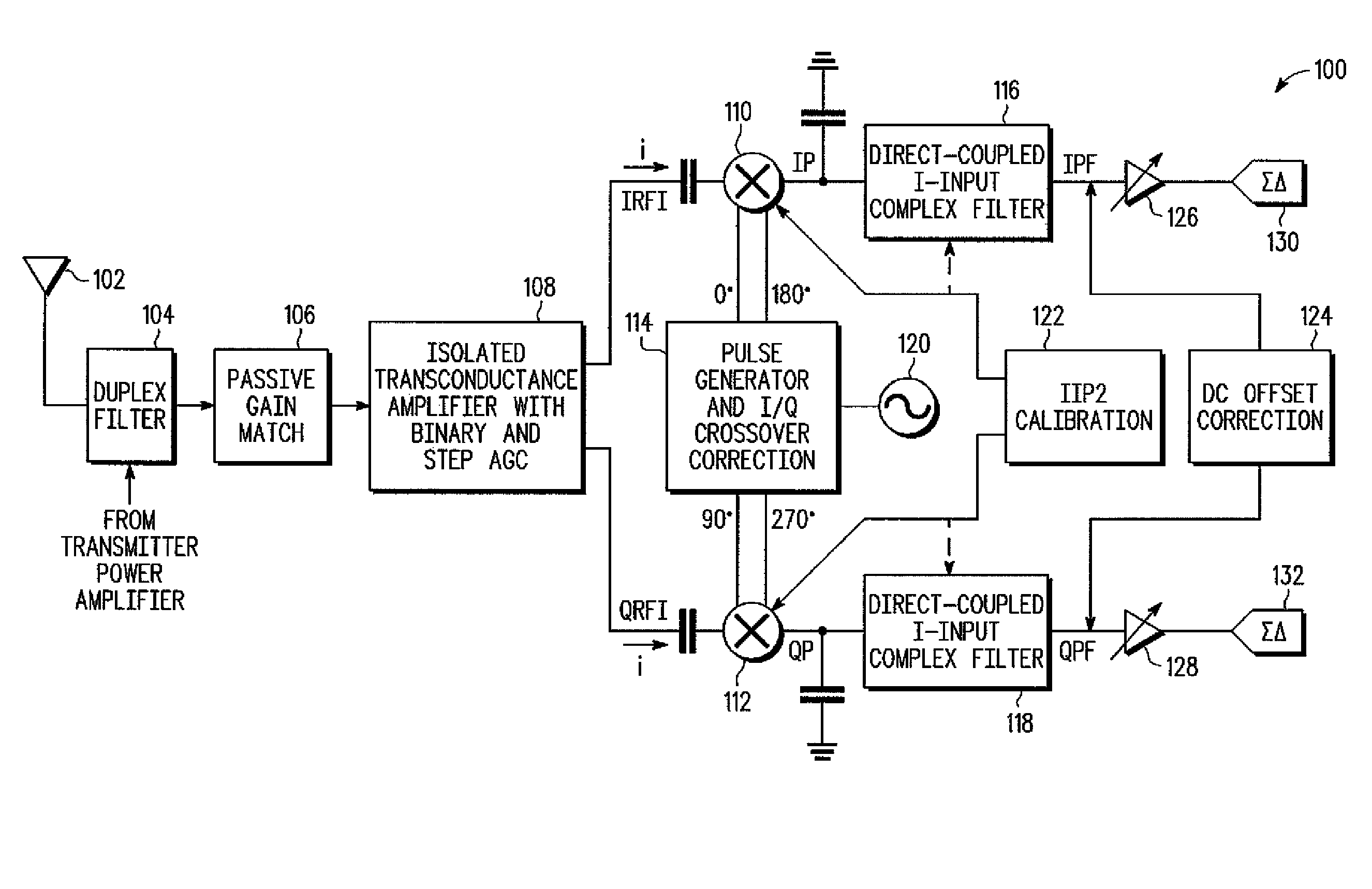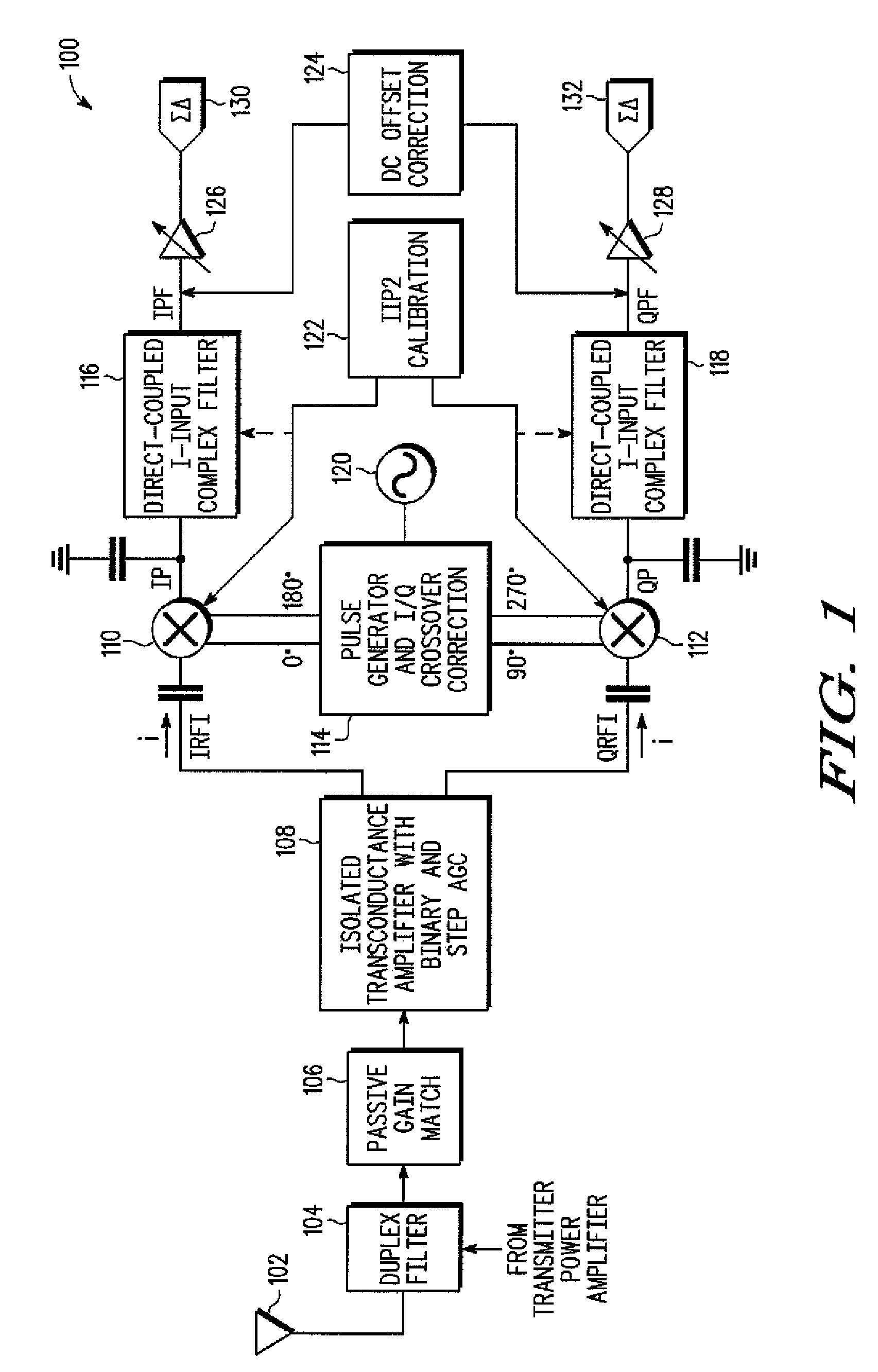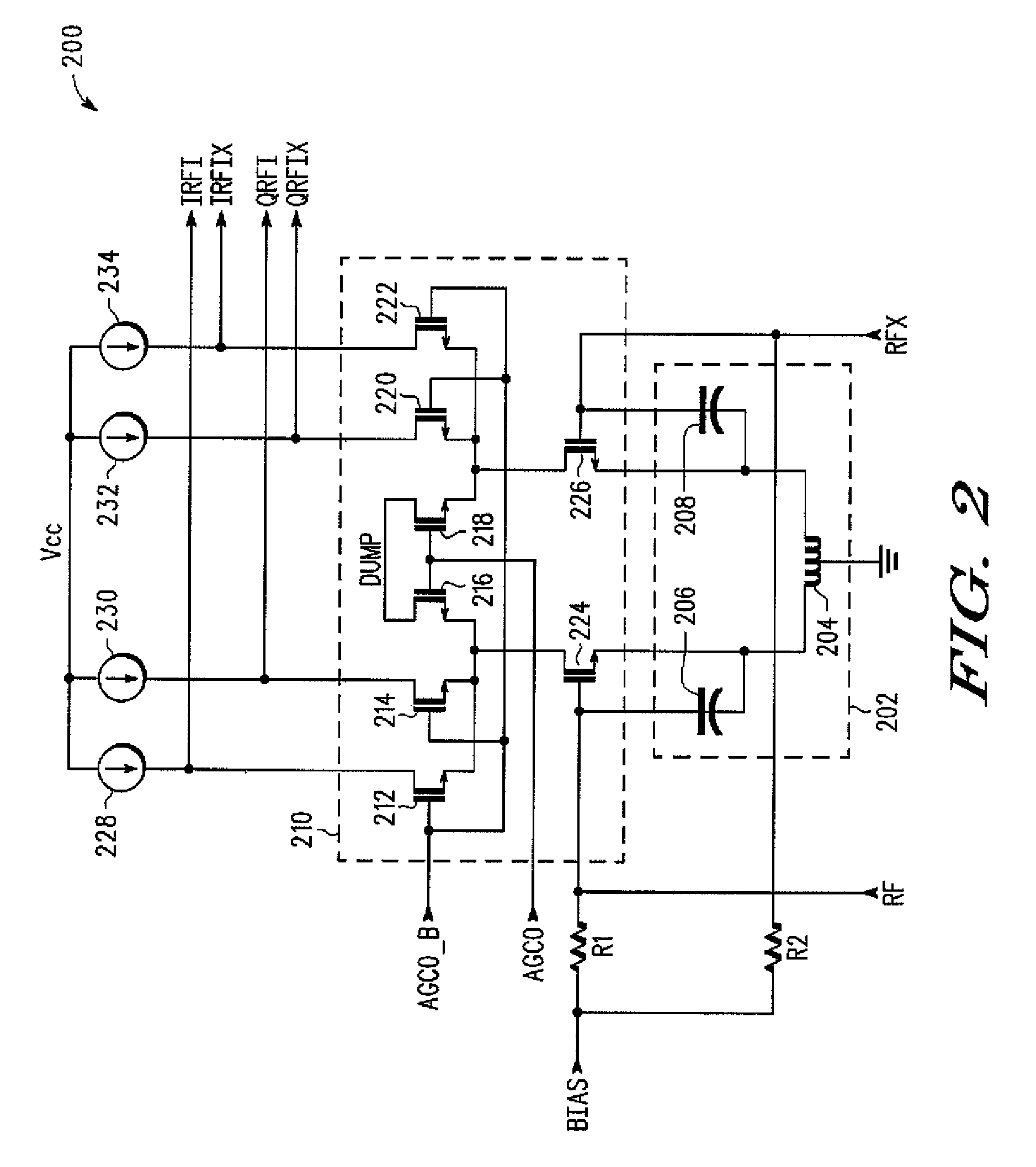Split channel receiver with very low second order intermodulation
a receiver and split channel technology, applied in the field of communications, can solve the problems of reducing the performance of an rf receiver, increasing the size of the die, increasing the cost and complexity, and increasing the power transmitted signal into the receive signal
- Summary
- Abstract
- Description
- Claims
- Application Information
AI Technical Summary
Benefits of technology
Problems solved by technology
Method used
Image
Examples
Embodiment Construction
[0017]By way of introduction, the embodiments described below include a radio frequency (RF) receiver including a transconductance amplifier, a pulse generator, a passive double balanced mixer, and a direct coupled complex filter. The transconductance amplifier may amplify and convert a received voltage of an RF signal to electrically isolated in-phase (I) and quadrature (Q) currents. The currents may be injected into the passive double balanced mixer to combine the currents with I and Q pulses to generate I and Q signals. Digital-to-analog converters may generate second order intercept point (IIP2) calibration signals for the I and Q channels. The IIP2 calibration signals may be combined in the mixer with the I and Q pulses when generating the I and Q signals. Adjusting the IIP2 level of the I channel does not affect the IIP2 level of the Q channel, and vice versa. A crossover correction circuit may control an amplitude crossover threshold of the I and Q pulses to reduce the amount...
PUM
 Login to View More
Login to View More Abstract
Description
Claims
Application Information
 Login to View More
Login to View More - R&D
- Intellectual Property
- Life Sciences
- Materials
- Tech Scout
- Unparalleled Data Quality
- Higher Quality Content
- 60% Fewer Hallucinations
Browse by: Latest US Patents, China's latest patents, Technical Efficacy Thesaurus, Application Domain, Technology Topic, Popular Technical Reports.
© 2025 PatSnap. All rights reserved.Legal|Privacy policy|Modern Slavery Act Transparency Statement|Sitemap|About US| Contact US: help@patsnap.com



